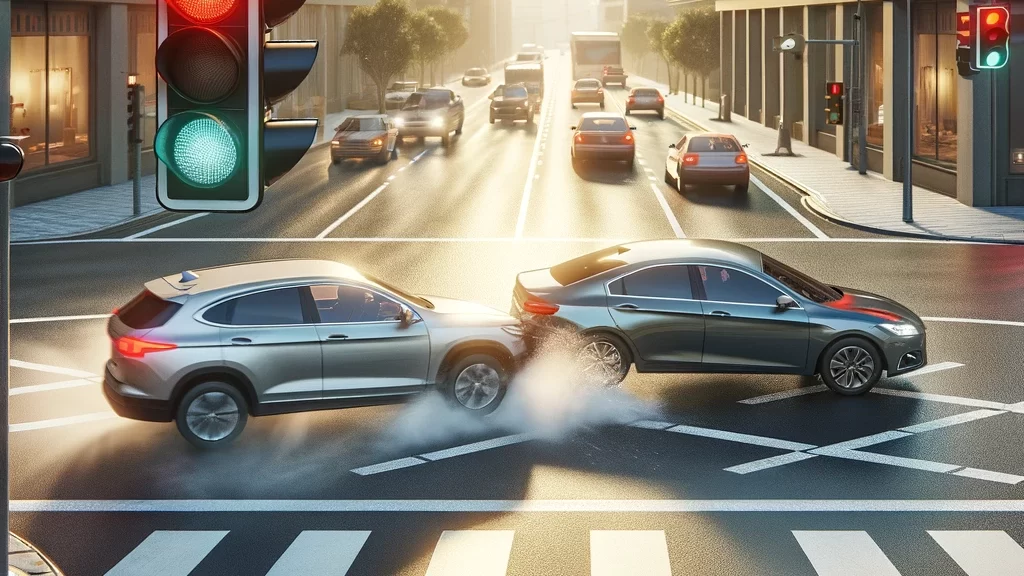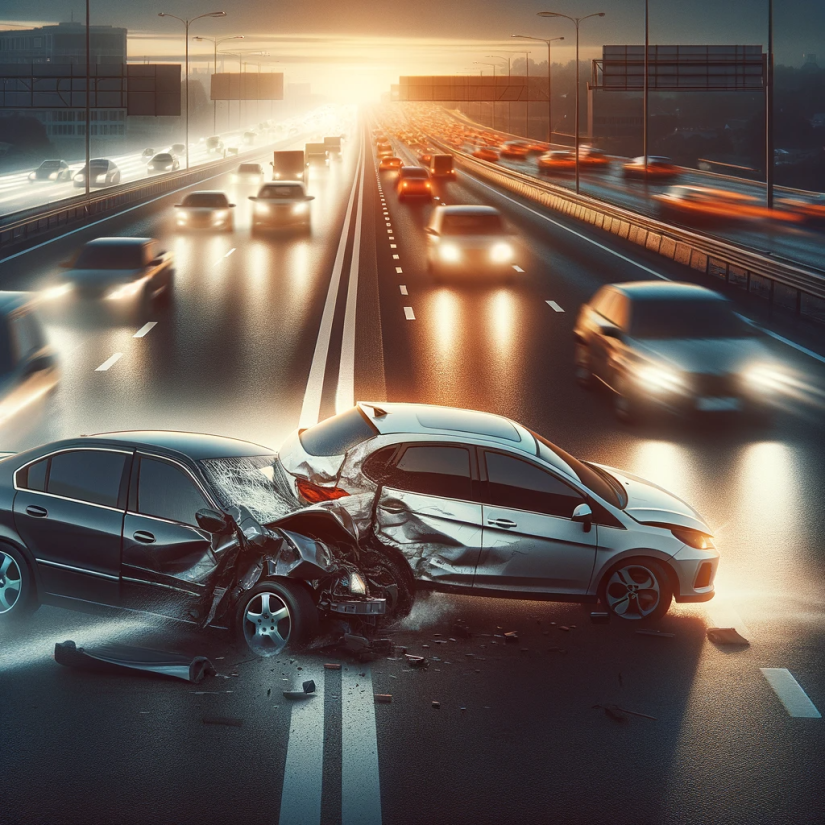Rear-End Collisions in Texas: Legal Guide to Determining Fault
January 14, 2024

Welcome to my comprehensive legal guide on determining fault in rear-end collisions in Texas. Rear-end accidents are the most commonly occurring type of vehicle crash in the United States, and it’s crucial to understand the legal implications when involved in such an incident in Texas.
Contrary to popular belief, the driver in the back is not automatically at fault for a rear-end collision in this state. Both drivers or neither party can be deemed at fault for a fender-bender. Texas follows the doctrine of modified comparative negligence, which means that both motorists can be held liable for the rear-end collision.
In these cases, the court assigns a percentage of fault to each party involved, and compensation is reduced based on the level of negligence at play. To navigate this complicated process and ensure you receive the compensation you deserve, it is essential to consult with a car accident attorney who specializes in rear-end collision cases.
Here’s an overview:
Key Takeaways
- Rear-end collisions are the most frequently occurring type of vehicle crash in the United States.
- The driver in the back is not automatically at fault for a rear-end collision in Texas.
- Texas follows the doctrine of modified comparative negligence.
- Both drivers involved in a rear-end collision can be found negligent.
- Fault in a rear-end accident is not automatically placed solely on the driver in the back.
Is the Driver in the Back Automatically at Fault for a Rear-End Crash?

One common misconception is that the driver in the back is automatically at fault for a rear-end accident in Texas. However, this is not always the case. While traffic laws emphasize the importance of maintaining a safe distance between vehicles, the driver in front can also contribute to the accident through negligence.
It is crucial to understand that fault in a rear-end collision is not automatically placed solely on the driver in the back. Both drivers’ actions and level of negligence are considered when determining liability in these situations.
Maintaining a safe following distance is essential to allow the driver in the back enough time to react and stop if the lead vehicle stops suddenly. However, if the driver in front unexpectedly slams on the brakes or engages in other negligent behavior, they may share or even bear full responsibility for the accident. Thus, it is essential to carefully assess the circumstances of the rear-end crash and consider all factors contributing to the collision to determine fault accurately.
Contributing Factors in Rear-End Collisions
Several factors can contribute to a rear-end crash, and fault may lie with either driver or both. Some common contributing factors include:
- Distracted driving: If either driver is distracted by texting, talking on the phone, or engaging in other activities that take their attention away from the road, it can lead to a rear-end collision.
- Speeding: Excessive speed can make it challenging for the driver in the back to stop in time, even with a safe following distance.
- Reckless driving: Tailgating, abrupt lane changes, or aggressive maneuvers can contribute to a rear-end crash.
- Failure to signal: A driver’s failure to use turn signals when changing lanes or making turns can cause confusion and increase the risk of a rear-end accident.
- Brake malfunction: In some cases, a faulty braking system in the lead vehicle may lead to sudden and unexpected stops, making it difficult for the driver in the back to avoid a collision.
These are just a few examples of contributing factors that can influence fault in a rear-end crash. It is essential to thoroughly evaluate each case’s unique circumstances to determine the responsible party or parties accurately.
Establishing Fault in Rear-End Collisions in Texas

When establishing fault in a rear-end collision in Texas, several pieces of evidence can support your claim:
- Police reports: If law enforcement responds to the scene of the accident, their report can provide valuable information about the circumstances and contributing factors.
- Witness statements: Gather contact information from any witnesses who saw the accident and obtain their statements regarding what they observed.
- Photographic evidence: Take photos of the accident scene, including any visible damages, skid marks, and traffic signs or signals.
- Vehicle damage assessments: Document the extent of damage to both vehicles, as this can help determine the force and angle of impact.
- Medical records: If you sustained injuries, retain all medical records, including doctor’s notes, treatment plans, and bills. These documents can provide evidence of the extent of your injuries and help establish the other driver’s negligence.
By compiling and presenting this evidence, you can build a strong case to establish fault in a rear-end collision and pursue the compensation you deserve.
Negligence in Rear-End Accidents in Texas

In Texas, negligence plays a crucial role in determining fault in rear-end accidents. Negligence is defined as the failure to act with reasonable care, leading to harm or injury to another person. In the case of rear-end collisions, negligence refers to the failure to exercise caution and maintain a safe distance from the vehicle in front.
Both drivers involved in a rear-end accident can be found negligent to some extent. Texas follows the doctrine of modified comparative negligence, which means that each driver’s compensation may be reduced based on their percentage of fault. For example, if a court determines that one driver is 30% at fault and the other is 70% at fault, the compensation of the less at-fault driver will be reduced by 30%.
In order to recover damages after a rear-end accident, it is necessary to prove that the other driver was negligent and that their negligence directly caused the injury. This can be done by providing evidence such as witness statements, accident reconstruction reports, and medical records.
It’s important to note that rear-end accidents can involve factors that contribute to negligence on both sides. For instance, the driver in front may abruptly stop without warning or improperly change lanes, which can also contribute to the collision. Therefore, a thorough investigation is required to establish the extent of negligence and determine fault.
By understanding the legal principles surrounding negligence in rear-end accidents, individuals can better navigate the claims process and seek fair compensation for their injuries.
Understanding Comparative Negligence
One important aspect of negligence in rear-end accidents is comparative negligence. Comparative negligence takes into account the actions and behaviors of each driver involved in the accident. If both drivers are found to be negligent, their compensation may be adjusted based on their respective levels of fault.
This means that even if you were involved in a rear-end accident where you were the driver in the back, you may still be entitled to compensation if the driver in front was also negligent. It is essential to work with an experienced attorney who can investigate the circumstances of the accident and establish the percentage of fault for each party involved.
Proving Negligence in Rear-End Accidents
To successfully prove negligence in a rear-end accident case, several key elements must be demonstrated:
- The defendant owed a duty of care to the plaintiff
- The defendant breached that duty of care through negligent actions or inactions
- The breach of duty was the direct cause of the plaintiff’s injuries
- The plaintiff suffered actual damages as a result
By focusing on these elements and providing compelling evidence, such as the police report, eyewitness testimony, and expert opinions, it is possible to establish the other driver’s negligence and pursue the compensation you deserve.
Can the Driver in the Front Be at Fault for a Rear-End Accident?

In some rear-end collisions, the driver in the front can be partially or fully at fault for causing the crash. While it is commonly assumed that the driver in the back is automatically responsible, this is not always the case. There are various scenarios where the actions of the driver in the front contribute to the accident:
- The lead driver cuts someone off, causing the driver in the back to collide with their vehicle.
- The driver in the front fails to use a turn signal, resulting in confusion and an unavoidable rear-end collision.
- The lead driver suddenly and unexpectedly slams on the brakes, giving the driver behind insufficient time to react and prevent a collision.
It is essential to recognize that each rear-end accident is unique, and fault determination depends on the specific circumstances of the incident. To determine fault in a rear-end accident case, it is highly recommended to consult with a knowledgeable car accident attorney. They can assess the details surrounding the collision, gather evidence, and establish liability for the accident.
The driver in the front can be at fault for a rear-end accident in certain situations.
How to Establish Fault and Seek Compensation for Rear-End Collisions in Texas
If you have been injured in a rear-end collision in Texas, it is crucial to follow certain steps to establish fault and seek compensation. Firstly, it is important to call the police and report the accident. This will create an official record of the incident, which can be valuable during the claims process.
Next, seek medical attention if necessary. Even if you don’t have visible injuries at the scene, it is important to have a healthcare professional evaluate your condition. Sometimes, injuries may manifest later, and having medical documentation will strengthen your case.
Gathering evidence at the scene is another important step. Take photos of the accident scene, including the damage to both vehicles and any road conditions that may have contributed to the collision. Additionally, collect contact information from any witnesses who may have observed the accident.
Finally, it is crucial to contact a personal injury attorney who specializes in rear-end collisions in Texas. An experienced attorney can guide you through the legal process, help establish fault, and seek the compensation you deserve. Make sure to provide all relevant documentation, such as medical bills, doctor’s notes, and communication with the insurance company, to support your claim and maximize your chances of a successful outcome.